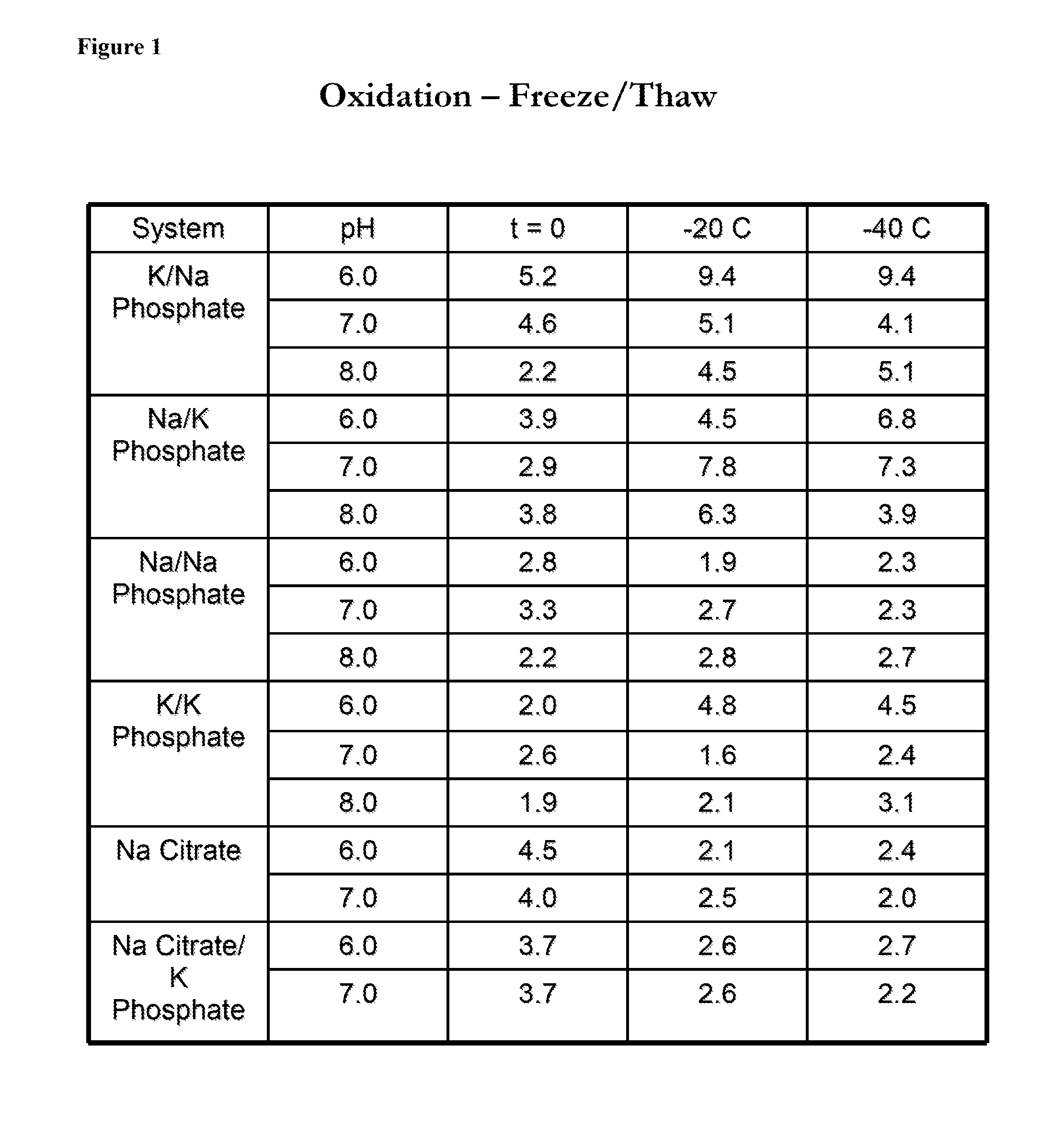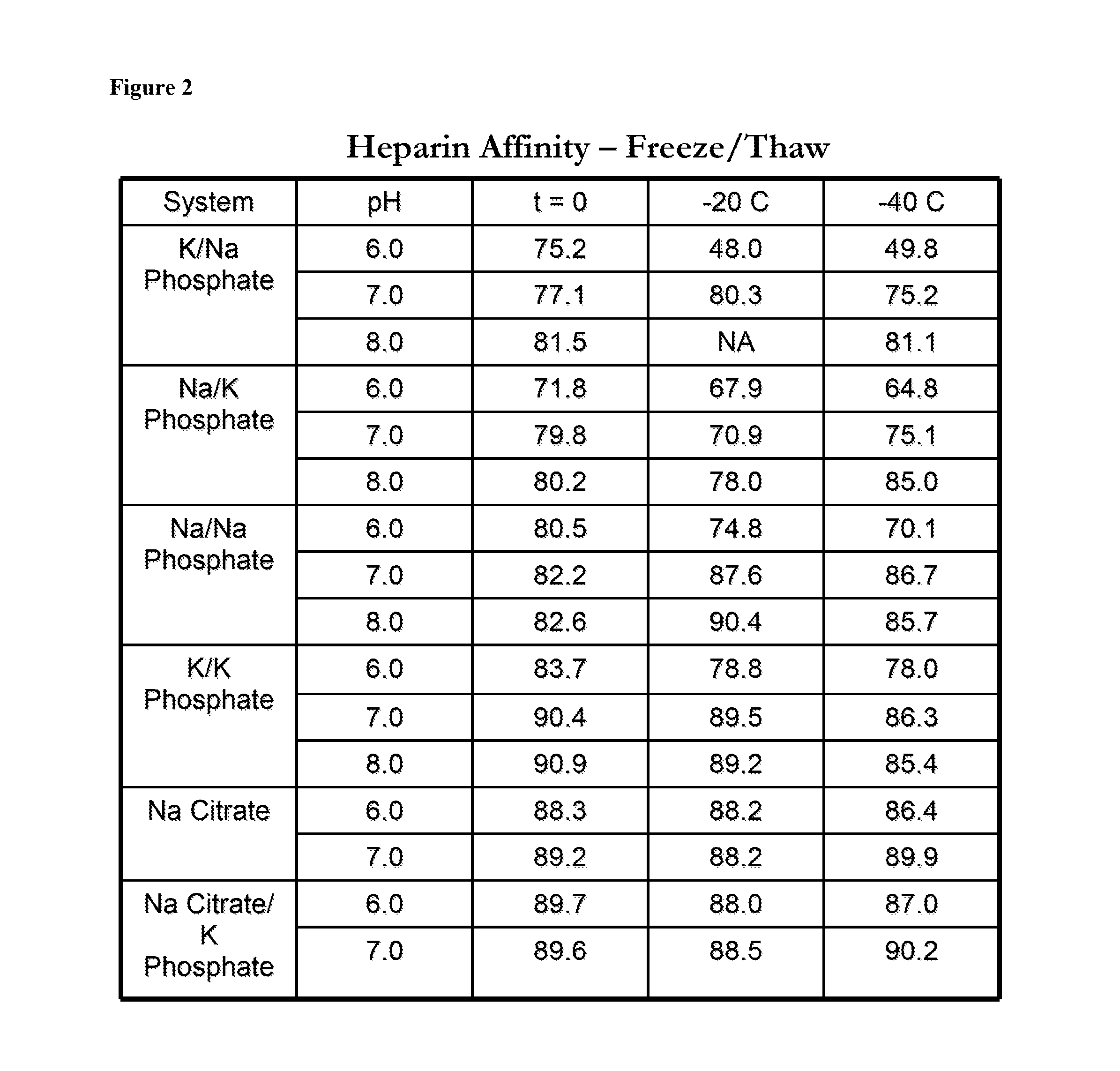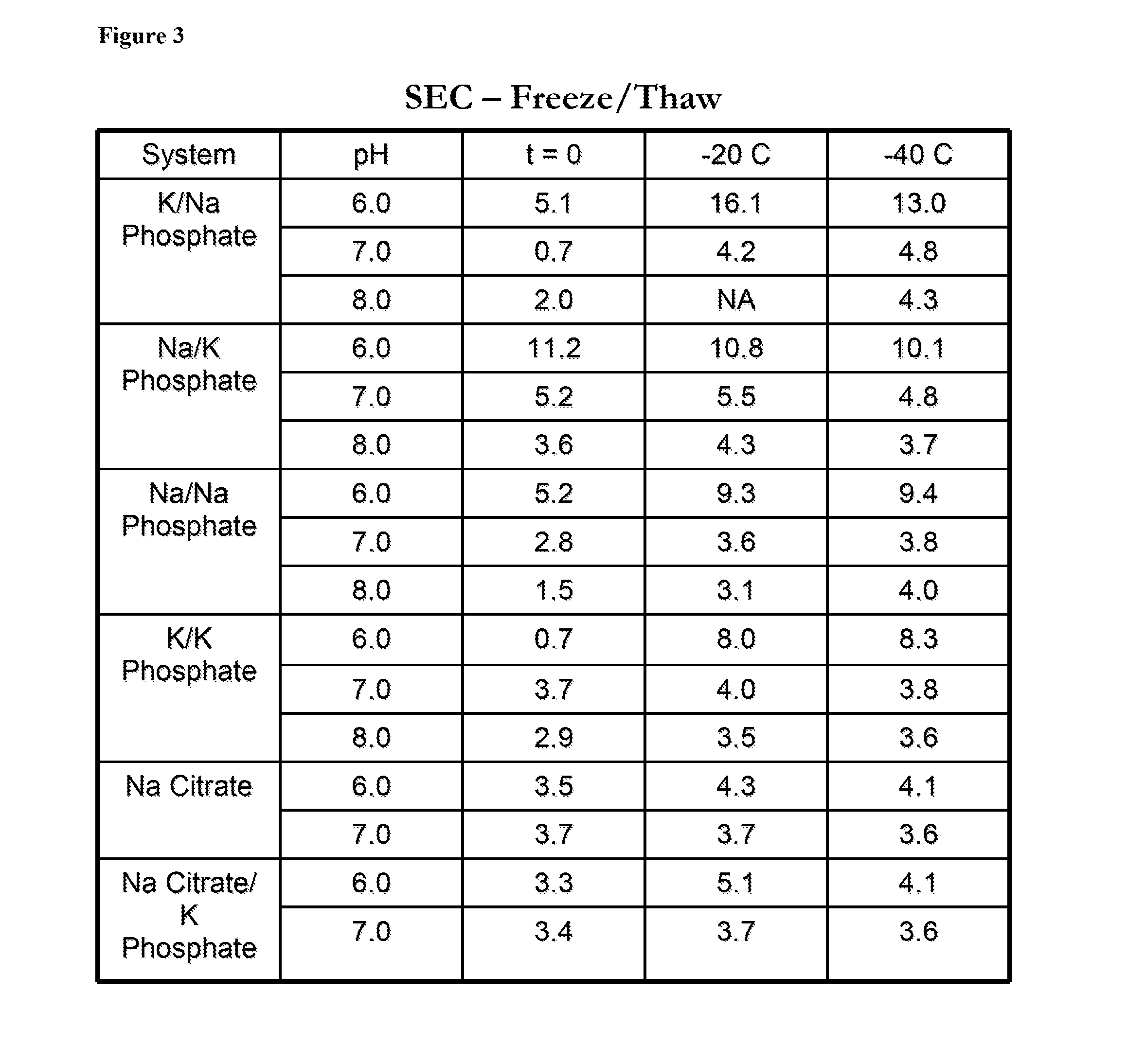Formulations that stabilize proteins
a technology of proteins and forms, applied in the field of forms that stabilize proteins, can solve problems such as limited stability of therapeutic proteins
- Summary
- Abstract
- Description
- Claims
- Application Information
AI Technical Summary
Benefits of technology
Problems solved by technology
Method used
Image
Examples
example 1
[0124]Solutions comprising antithrombin and a variety of phosphate and citrate buffers at pH 6, pH 7, or pH 8 (phosphate buffers) or at pH 6 or pH 7 (citrate buffers), were subjected to a freeze thaw cycle to −20° C. or −40° C. The solutions were kept in 60 ml bags during the freeze-thaw cycle. The concentration of antithrombin used is between 5-10 mg / ml. The oxidation status, heparin affinity, and aggregation of antithrombin were determined prior to and after undergoing the freeze-thaw cycle. The aggregation of antithrombin (expressed in percentages) was determined by Size Exclusion Chromatography (SEC). The oxidation of antithrombin was determined by using RP-HPLC to isolate the antithrombin followed by peptide mapping. FIG. 1 shows the oxidation status of antithrombin after freeze / thaw in a variety of buffers. FIG. 2 shows the heparin affinity of antithrombin after freeze / thaw in a variety of buffers. FIG. 3 shows the aggregation of antithrombin after freeze / thaw in a variety of ...
example 2
[0125]Solutions comprising antithrombin and a variety of phosphate and citrate buffers at pH 6, pH 7, or pH 8 (phosphate buffers) or at pH 6 or pH 7 (citrate buffers), were stored at between 2° C. and 8° C. for a period of up to three months. The solutions were stored in 60 ml bags. The concentration of antithrombin used is between 5-10 mg / ml. The oxidation status, heparin affinity and aggregation (by SEC) of antithrombin were determined prior to and after storage. The oxidation of antithrombin (expressed in percentages) was determined by using RP-HPLC to isolate the antithrombin followed by peptide mapping. The heparin binding was determined by contacting the formulation with a heparin binding column followed by HPLC. FIG. 4 shows the oxidation status of antithrombin after storage at 2-8° C. in a variety of buffers. FIG. 5 shows the heparin affinity of antithrombin after storage at 2-8° C. in a variety of buffers. FIG. 6 shows the aggregation of antithrombin after storage at 2-8° C...
example 3
[0126]Potassium chloride (120 mM at pH 7.5) was added to solutions comprising antithrombin and a variety of phosphate and citrate buffers at pH 6, pH 7, or pH 8 (phosphate buffers) or at pH 6 or pH 7 (citrate buffers). The solutions were subsequently subjected to a freeze thaw cycle to −20° C. or −40° C. The solutions were kept in 60 ml bags during the freeze-thaw cycle. The concentration of antithrombin used is between 5-10 mg / ml. The oxidation status, heparin affinity, and aggregation of antithrombin were determined prior to and after undergoing the freeze-thaw cycle. The oxidation of antithrombin (expressed in percentages) was determined by using RP-HPLC to isolate the antithrombin followed by peptide mapping. The heparin binding was determined by contacting the formulation with a heparin binding column followed by HPLC. The aggregation of antithrombin (expressed in percentages) was determined by Size Exclusion Chromatography (SEC). FIG. 11 shows the oxidation status of antithrom...
PUM
| Property | Measurement | Unit |
|---|---|---|
| pH | aaaaa | aaaaa |
| temperature | aaaaa | aaaaa |
| temperature | aaaaa | aaaaa |
Abstract
Description
Claims
Application Information
 Login to View More
Login to View More - R&D
- Intellectual Property
- Life Sciences
- Materials
- Tech Scout
- Unparalleled Data Quality
- Higher Quality Content
- 60% Fewer Hallucinations
Browse by: Latest US Patents, China's latest patents, Technical Efficacy Thesaurus, Application Domain, Technology Topic, Popular Technical Reports.
© 2025 PatSnap. All rights reserved.Legal|Privacy policy|Modern Slavery Act Transparency Statement|Sitemap|About US| Contact US: help@patsnap.com



